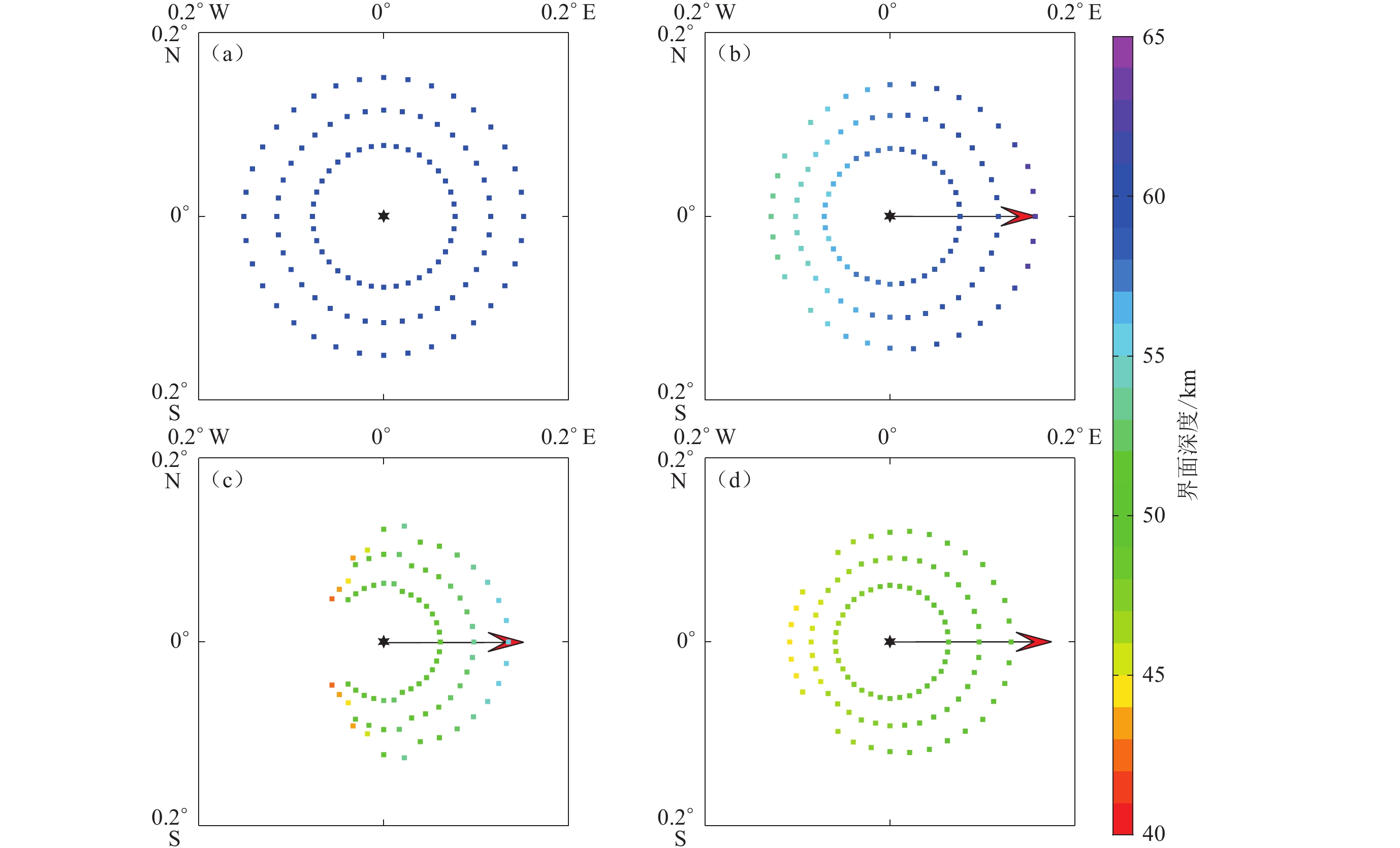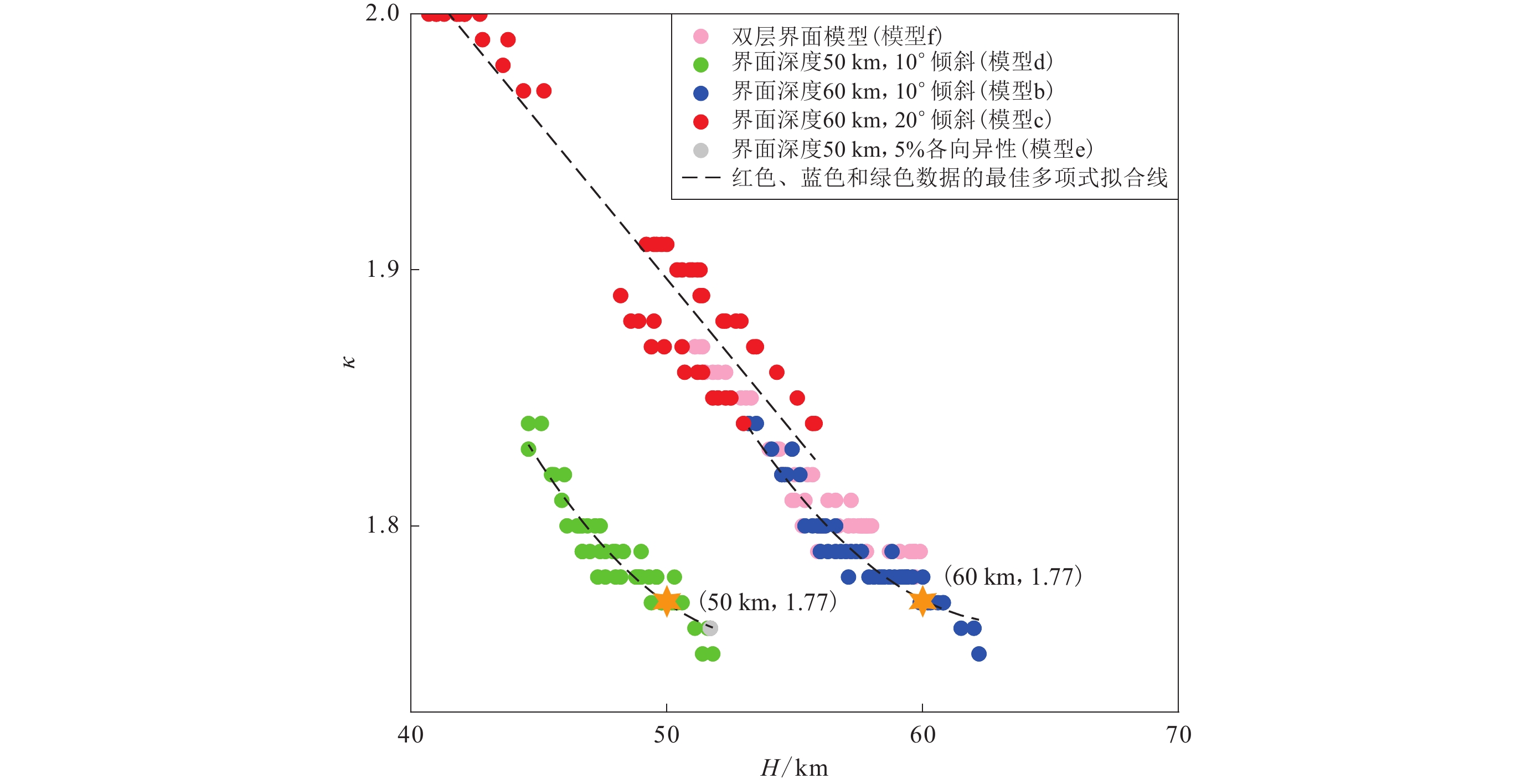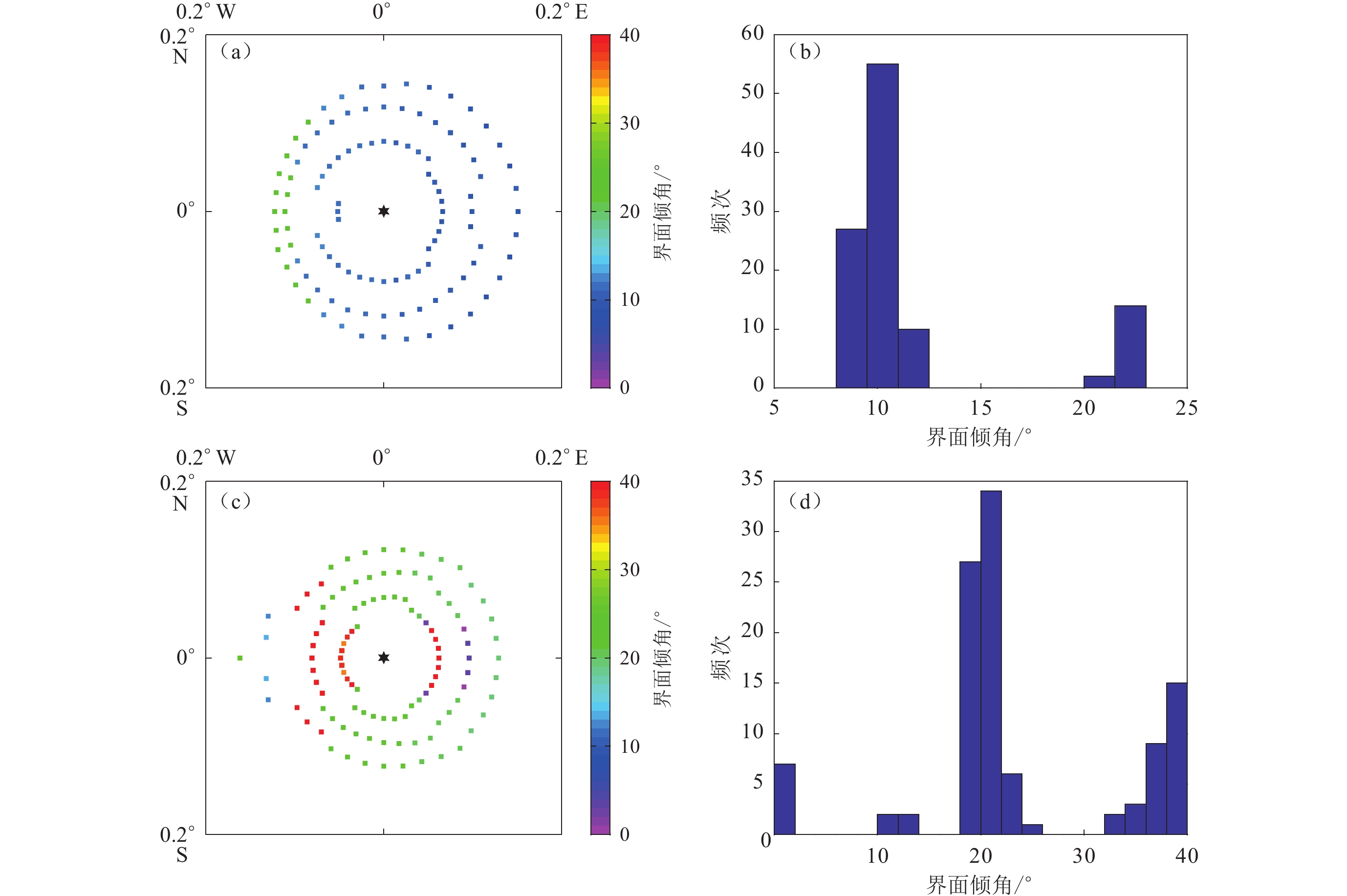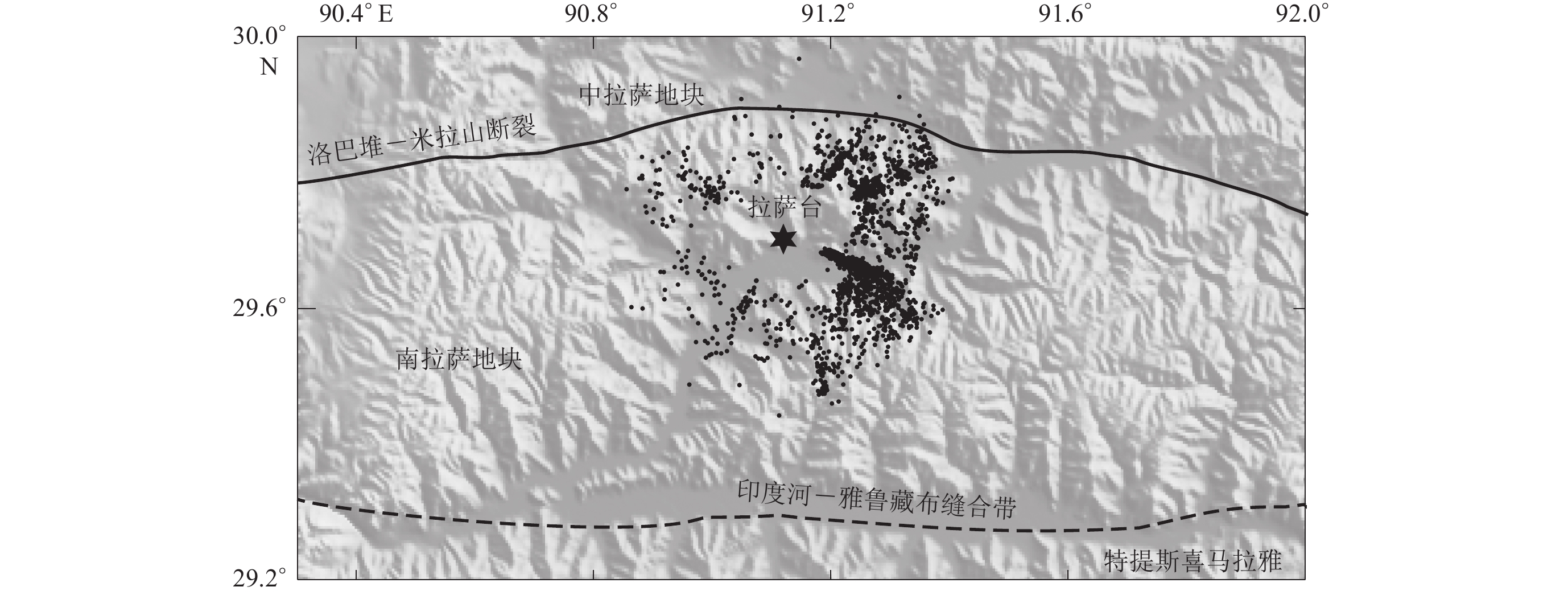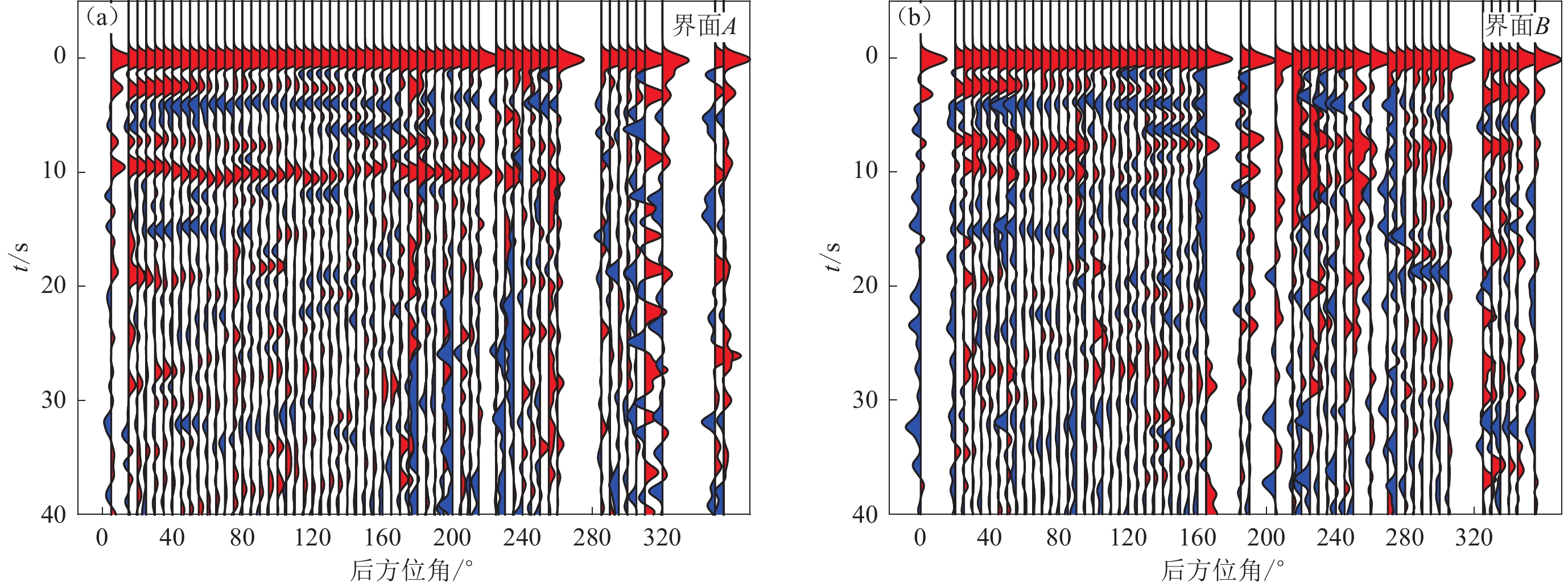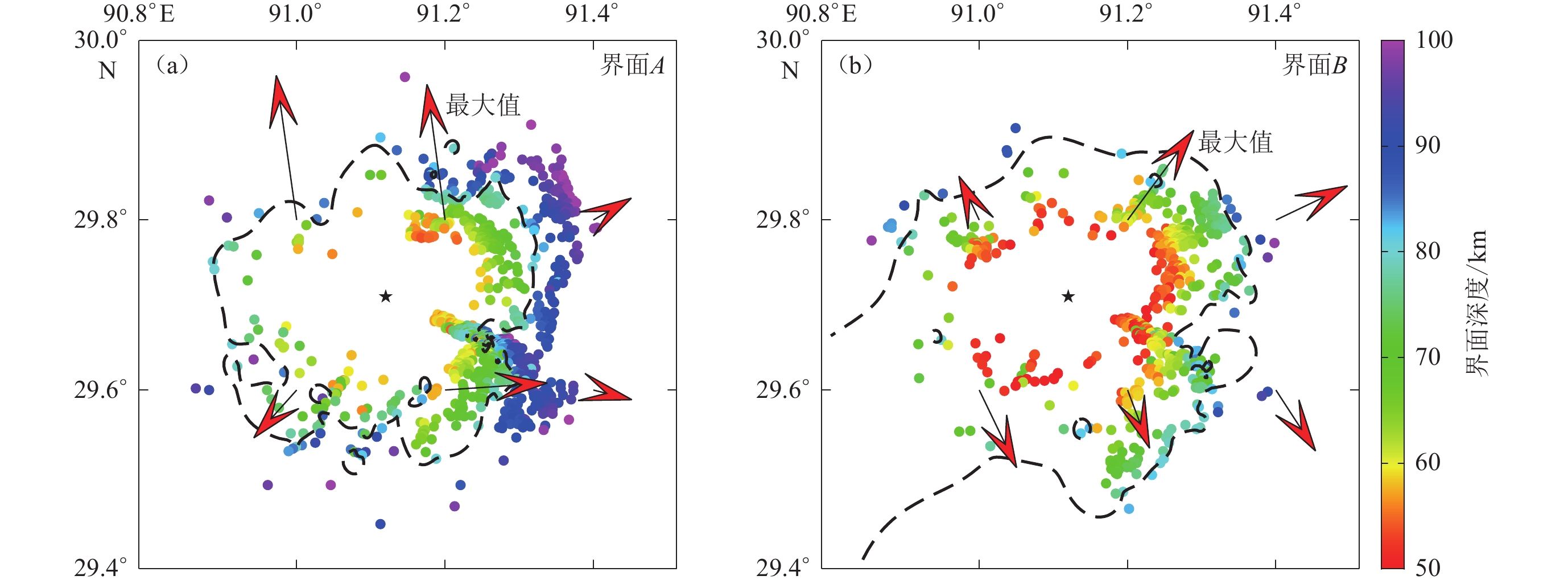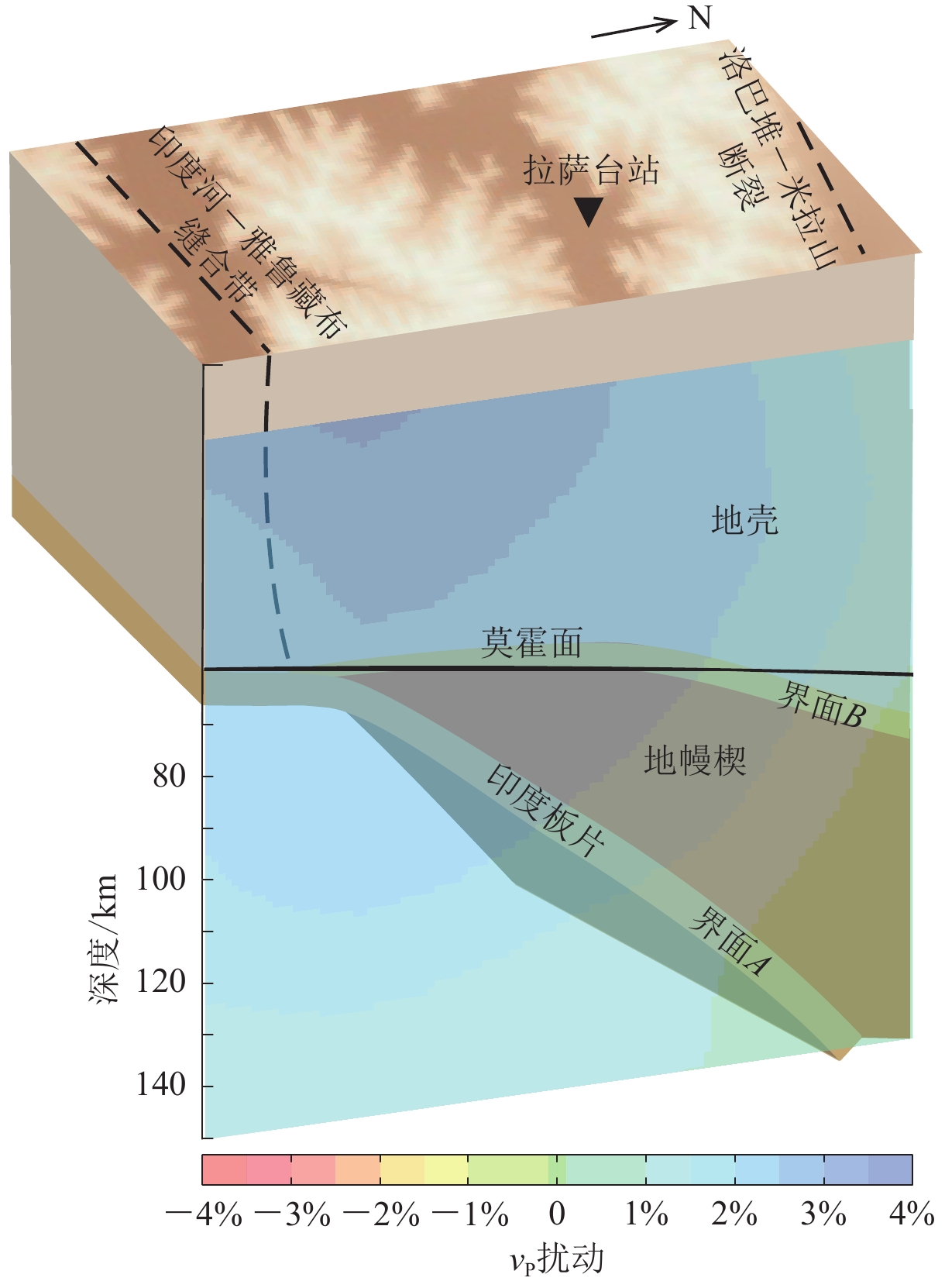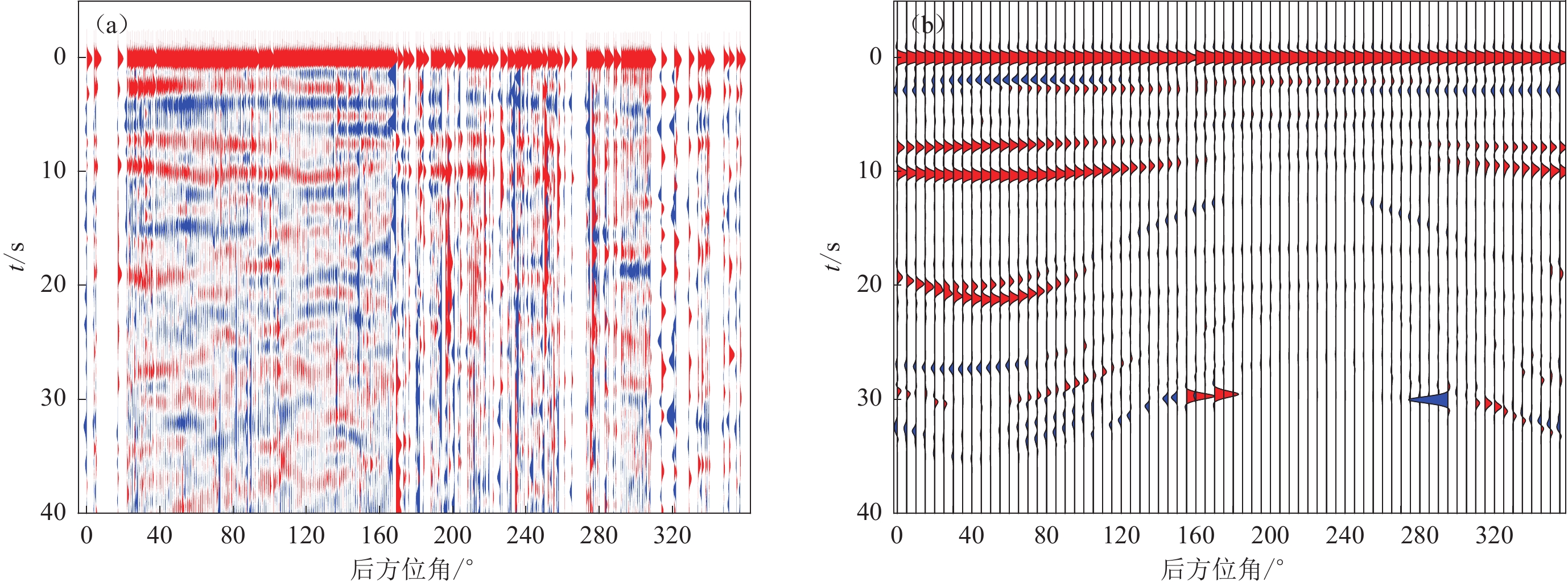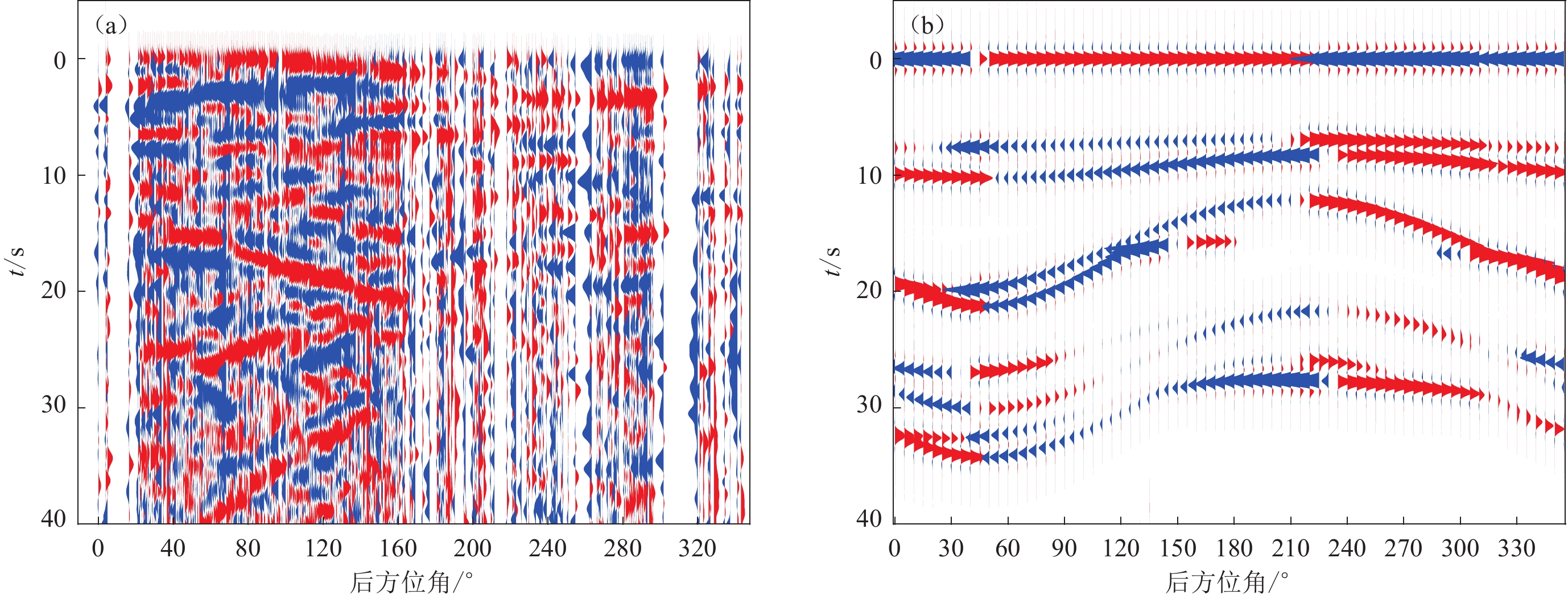Characteristics of deep structure beneath Lhasa from multi-layer H-κ stacking method
-
摘要:
对不同深度莫霍面正演模拟的每条接收函数进行H-κ扫描,将得到的H和κ投影到平面图,发现同深度莫霍面的投影点能够拟合成一条曲线,进而通过该曲线能够分离不同深度界面对应的接收函数。在此基础上,再利用H-κ-θ方法计算估计倾斜界面的倾角和倾向。最终实现倾斜界面和“双莫霍”现象的辨识。利用此流程处理了拉萨固定台站(LSA)记录的大量接收函数,获得了拉萨台下方的地壳厚度约为70 km,地壳平均波速比约为1.67,莫霍面倾向北东,倾角为24°,而莫霍面下俯冲的印度板块界面深度约为106 km,倾向正北,倾角约为40°,其上方地幔楔内部的平均波速比约为1.69。正演模型计算结果和实际观测数据检验综合表明该方法能较好地区分不同界面对应的接收函数,藉此获取其界面的构造变化特征,有助于获得更加精细的壳幔结构特征。
Abstract:The Moho discontinuity, marking the boundary between the Earth’s crust and mantle, carries abundant information about the structure and evolution of the crust-mantle system. The “doublet Moho” phenomenon observed beneath the Tibetan Plateau complicates the investigation of Moho structure. The H-κ stacking of teleseismic receiver functions is a widely employed technique for determining Moho depth and crustal vP/vS ratios of horizontal layered crustal structure. The H-κ stacking was performed on each receiver function for different depth of the Moho from synthetic model. And, the obtained values of H and κ is projected onto a planar map, which reveals that the projected points corresponding to the same depth Moho interface align along a curve. Thus, the separated receiver functions is easily associated with distinct interface depths. Then, one can determine the dip direction of a tilted interface by analyzing the crustal thickness projection map. Subsequent processing can be targeted at each layer of receiver functions individually. Utilizing a large dataset of seismic recordings from LSA station of China Digital Seismograph Network, we follow the above-mentioned steps to separate the receiver functions of LSA and identify two key interfaces. Finally, employing the H-κ-θ method independently for each interface, we derived the following characteristics of the two interfaces: ① the crustal thickness beneath the Lhasa station is approximately 70 km with an average vP/vS ratio of about 1.67, and the Moho interface dips at an angle of 24°; ② the subducting Indian Plate interface lies at a depth of about 106 km with a dip angle of 40°. Above this interface of 106 km depth, the average vP/vS ratio within the mantle wedge between the two interfaces is approximately 1.69. Our results demonstrate the effectiveness of this method in distinguishing receiver functions corresponding to different interfaces. By integrating this approach with other techniques, more accurate subsurface structures can be elucidated, providing valuable insights into the geologic structure beneath the Qinghai-Xizang Plateau. This work contributes to a better understanding of the complex tectonic processes in this seismically active region.
-
Keywords:
- receiver function /
- multi-layer interface /
- dipping interface /
- LSA station
-
-
图 2 正演模型(表1中所列)的分方位H-κ扫描结果
图中红色箭头为最大梯度方向,红色箭头长度为归一化后的梯度大小。(a) 模型界面水平,界面深度H为60 km;(b) 模型界面倾角θ为10°,H为60 km;(c) 模型界面θ为20°,H为60 km;(d) 模型界面θ为10°,H为50 km
Figure 2. The H-κ stacking result in azimuth for the four forward models listed in Table 1
The red arrow points to maximum gradient,the length of the red arrow represents the size of the normalized gradient. (a) Horizontally interface and interface depth 60 km;(b) Interface with inclination 10° and depth 60 km;(c) Interface with inclination 20° and depth 60 km;(d) Interface with inclination 10° and depth 50 km
图 7 拉萨台站P波接收函数和H-κ平面图
(a) 拉萨台站全部接收函数按方位角5°范围叠加排列;(b) 拉萨台站分方位扫描后的H-κ平面图
Figure 7. P-wave receiver functions beneath LSA station and their H-κ stacking image
(a) All of stacked receiving functions of LSA stations arranged in 5° azimuth bin;(b) The H-κ plan diagram of the LSA station after stacking in azimuth
图 9 拉萨台站下方界面A (a)和B (b)的分方位H-κ扫描投影图
图中红色箭头的方向和长度代表梯度的方向和大小,黑色虚线代表80 km等深线
Figure 9. The projected map of H-κ scanning in azimuth results of interfaces A (a) and B (b) beneath LSA station
The direction and length of the red arrow represents the direction and size of the gradient,the black dashed line represents the 80 km iso-depth contour line
图 11 拉萨台站下方界面模型与层析成像结果对比(引自He et al,2010)
Figure 11. Comparison of subsurface interface model beneath the LSA station with tomographic imaging results (after He et al,2010)
表 1 正演模型参数
Table 1 Forward model parameters
模型编号 界面深度/km 界面倾向 界面倾角/° 各向异性 震中距/° 模型层数 模型参数 vP/(km·s−1) vP/vS a 60 − − − 30,60,90 2 上层
下层6.2
8.11.77
1.77b 60 正东 10 − 30,60,90 2 c 60 正东 20 − 30,60,90 2 d 50 正东 10 − 30,60,90 2 e 50 − − 5% 60 2 f 50,60 正东 10 − 30,90 3 上层
中层
下层6.2
7.1
8.11.77
1.77
1.77 -
常承法. 1980. 雅鲁藏布江蛇绿岩带的新观察资料[J]. 地震地质,2(1):18–89. Chang C F. 1980. Newly observed data in ophiolitic zone along Yarlung Zangbo River,China[J]. Seismology and Geology,2(1):18–89 (in Chinese).
段永红,刘保金,赵金仁,刘保峰,张成科,潘素珍,林吉焱,郭文斌. 2015. 华北构造区岩石圈二维P波速度结构特征:来自盐城—包头深地震测深剖面的约束[J]. 中国科学:地球科学,45(8):1183–1197. Duan Y H,Liu B J,Zhao J R,Liu B F,Zhang C K,Pan S Z,Lin J Y,Guo W B. 2015. 2-D P-wave velocity structure of lithosphere in the North China tectonic zone:Constraints from the Yancheng-Baotou deep seismic profile[J]. Science China Earth Sciences,58(9):1577–1591. doi: 10.1007/s11430-015-5081-y
房立华,吴建平. 2009. 倾斜界面和各向异性介质对接收函数的影响[J]. 地球物理学进展,24(1):42–50. Fang L H,Wu J P. 2009. Effects of dipping boundaries and anisotropic media on receiver functions[J]. Progress in Geophysics,24(1):42–50 (in Chinese).
高锐,熊小松,李秋生,卢占武. 2009. 由地震探测揭示的青藏高原莫霍面深度[J]. 地球学报,30(6):761–773. doi: 10.3321/j.issn:1006-3021.2009.06.008 Gao R,Xiong X S,Li Q S,Lu Z W. 2009. The Moho depth of Qinghai-Tibet Plateau revealed by seismic detection[J]. Acta Geoscientia Sinica,30(6):761–773 (in Chinese).
高星,王卫民,姚振兴. 2005. 中国及邻近地区地壳结构[J]. 地球物理学报,48(3):591–601. doi: 10.3321/j.issn:0001-5733.2005.03.017 Gao X,Wang W M,Yao Z X. 2005. Crustal structure of China mainland and its adjacent regions[J]. Chinese Journal of Geophysics,48(3):591–601 (in Chinese).
侯增谦,郑远川,卢占武,许博,王长明,张洪瑞. 2020. 青藏高原巨厚地壳:生长、加厚与演化[J]. 地质学报,94(10):2797–2815. doi: 10.3969/j.issn.0001-5717.2020.10.001 Hou Z Q,Zheng Y C,Lu Z W,Xu B,Wang C M,Zhang H R. 2020. Growth,thickening and evolution of the thickened crust of the Tibet Plateau[J]. Acta Geologica Sinica,94(10):2797–2815 (in Chinese).
嵇少丞,王茜,杨文采. 2009. 华北克拉通泊松比与地壳厚度的关系及其大地构造意义[J]. 地质学报,83(3):324–330. doi: 10.3321/j.issn:0001-5717.2009.03.002 Ji S C,Wang Q,Yang W C. 2009. Correlation between crustal thickness and Poisson’s ratio in the North China Craton and its implication for lithospheric thinning[J]. Acta Geologica Sinica,83(3):324–330 (in Chinese).
李玮,陈赟,谭萍,袁晓晖. 2020. 大陆深俯冲的深浅动力学响应:来自帕米尔高原地壳精细结构的约束[J]. 中国科学:地球科学,50(5):663–676. Li W,Chen Y,Tan P,Yuan X H. 2020. Geodynamic processes of the continental deep subduction:Constraints from the fine crustal structure beneath the Pamir Plateau[J]. Science China Earth Sciences,63(5):649–661. doi: 10.1007/s11430-019-9587-3
任建业,庞雄,雷超,袁立忠,刘军,杨林龙. 2015. 被动陆缘洋陆转换带和岩石圈伸展破裂过程分析及其对南海陆缘深水盆地研究的启示[J]. 地学前缘,22(1):102–114. Ren J Y,Pang X,Lei C,Yuan L Z,Liu J,Yang L L. 2015. Ocean and continent transition in passive continental margins and analysis of lithospheric extension and breakup process:Implication for research of the deepwater basins in the continental margins of South China Sea[J]. Earth Science Frontiers,22(1):102–114 (in Chinese).
申婷婷,张立飞,陈晶. 2016. 俯冲带蛇纹岩的变质过程[J]. 岩石学报,32(4):1206–1218. Shen T T,Zhang L F,Chen J. 2016. Metamorphism of subduction zone serpentinite[J]. Acta Petrologica Sinica,32(4):1206–1218 (in Chinese).
谭萍,陈赟,孙维昭,李玮,唐国彬,崔田. 2018. 一种改进的适应于倾斜Moho面的H-κ-θ叠加方法及应用[J]. 地球物理学报,61(9):3689–3700. doi: 10.6038/cjg2018M0032 Tan P,Chen Y,Sun W Z,Li W,Tang G B,Cui T. 2018. An improved H-κ-θ stacking method to determine the crustal thickness and bulk vP/vS ratios in the case of a slant Moho interface[J]. Chinese Journal of Geophysics,61(9):3689–3700 (in Chinese).
滕吉文,曾融生,闫雅芬,张慧. 2002. 东亚大陆及周边海域Moho界面深度分布和基本构造格局[J]. 中国科学(D辑),32(2):89–100. Teng J W,Zeng R S,Yan Y F,Zhang H. 2003. Depth distribution of Moho and tectonic framework in eastern Asian continent and its adjacent ocean areas[J]. Science in China:Series D,46(5):428–446. doi: 10.1360/03yd9038
王成善,李亚林,刘志飞,李祥辉,唐菊兴,Rejean H,Cote D,Varfalvy V,Huot F. 2005. 雅鲁藏布江蛇绿岩再研究:从地质调查到矿物记录[J]. 地质学报,79(3):323–330. doi: 10.3321/j.issn:0001-5717.2005.03.005 Wang C S,Li Y L,Liu Z F,Li X H,Tang J X,Rejean H,Cote D,Varfalvy V,Huot F. 2005. Yarlung-Zangbo ophiolites revisited:From geological survey to mineral records[J]. Acta Geologica Sinica,79(3):323–330 (in Chinese).
危自根,储日升,陈凌,崇加军,李志伟. 2016. 复杂地壳接收函数H-κ叠加:以安纳托利亚板块为例[J]. 地球物理学报,59(11):4048–4062. doi: 10.6038/cjg20161110 Wei Z G,Chu R S,Chen L,Chong J J,Li Z W. 2016. Analysis of H-κ stacking of receiver functions beneath crust with complex structure:Taking the Anatolia Plate as an example[J]. Chinese Journal of Geophysics,59(11):4048–4062 (in Chinese).
许志琴,杨经绥,李文昌,李化启,蔡志慧,闫臻,马昌前. 2013. 青藏高原中的古特提斯体制与增生造山作用[J]. 岩石学报,29(6):1847–1860. Xu Z Q,Yang J S,Li W C,Li H Q,Cai Z H,Yan Z,Ma C Q. 2013. Paleo-Tethys system and accretionary orogen in the Tibet Plateau[J]. Acta Petrologica Sinica,29(6):1847–1860 (in Chinese).
曾融生,孙为国,毛桐恩,林中洋,胡鸿翔,陈光英. 1995. 中国大陆莫霍界面深度图[J]. 地震学报,17(3):322–327. Zeng R S,Sun W G,Mao T N,Lin Z Y,Hu H X,Chen G Y. 1995. The depth map of the Moho across China[J]. Acta Seismologica Sinica,17(3):322–327 (in Chinese).
查小惠,孙长青,李聪. 2013. 倾斜界面和各向异性地层对H-κ搜索结果的影响[J]. 地球物理学进展,28(1):121–131. doi: 10.6038/pg20130113 Zha X H,Sun C Q,Li C. 2013. The effects of dipping interface and anisotropic layer on the result of H-κ method[J]. Progress in Geophysics,28(1):121–131 (in Chinese).
张洪双,田小波,滕吉文. 2009. 接收函数方法估计Moho倾斜地区的地壳速度比[J]. 地球物理学报,52(5):1243–1252. doi: 10.3969/j.issn.0001-5733.2009.05.013 Zhang H S,Tian X B,Teng J W. 2009. Estimation of crustal vP/vS with dipping Moho from receiver functions[J]. Chinese Journal of Geophysics,52(5):1243–1252 (in Chinese).
张洪双,滕吉文,田小波,张中杰,高锐. 2013. 青藏高原东北缘岩石圈厚度与上地幔各向异性[J]. 地球物理学报,56(2):459–471. doi: 10.6038/cjg20130210 Zhang H S,Teng J W,Tian X B,Zhang Z J,Gao R. 2013. Lithospheric thickness and upper mantle anisotropy beneath the northeastern Tibetan Plateau[J]. Chinese Journal of Geophysics,56(2):459–471 (in Chinese).
张万平,袁四化,刘伟. 2011. 青藏高原南部雅鲁藏布江蛇绿岩带的时空分布特征及地质意义[J]. 西北地质,44(1):1–9. doi: 10.3969/j.issn.1009-6248.2011.01.001 Zhang W P,Yuan S H,Liu W. 2011. Distribution and research significance of ophiolite in Brahmaputra Suture Zone,southern Tibet[J]. Northwestern Geology,44(1):1–9 (in Chinese).
Chen Y L,Niu F L,Liu R F,Huang Z B,Tkalčić H,Sun L,Chan W. 2010. Crustal structure beneath China from receiver function analysis[J]. J Geophys Res:Solid Earth,115(B3):B03307.
Christensen N I. 1996. Poisson’s ratio and crustal seismology[J]. J Geophys Res:Solid Earth,101(B2):3139–3156. doi: 10.1029/95JB03446
Christensen N I,Ramananantoandro R. 1971. Elastic moduli and anisotropy of dunite to 10 kilobars[J]. J Geophys Res,76(17):4003–4010. doi: 10.1029/JB076i017p04003
Dong X Y,Li W H,Lu Z W,Huang X F,Gao R. 2020. Seismic reflection imaging of crustal deformation within the eastern Yarlung-Zangbo suture zone[J]. Tectonophysics,780:228395. doi: 10.1016/j.tecto.2020.228395
Dziewonski A M,Anderson D L. 1981. Preliminary reference Earth model[J]. Phys Earth Planet Inter,25(4):297–356. doi: 10.1016/0031-9201(81)90046-7
Frederiksen A W,Bostock M G. 2000. Modelling teleseismic waves in dipping anisotropic structures[J]. Geophys J Int,141(2):401–412. doi: 10.1046/j.1365-246x.2000.00090.x
Gao R,Lu Z W,Klemperer S L,Wang H Y,Dong S W,Li W H,Li H Q. 2016. Crustal-scale duplexing beneath the Yarlung Zangbo suture in the western Himalaya[J]. Nat Geosci,9(7):555–560. doi: 10.1038/ngeo2730
Gilbert F,Dziewonski A M. 1975. An application of normal mode theory to the retrieval of structural parameters and source mechanisms from seismic spectra[J]. Philos Trans R Soc A:Math Phys Eng Sci,278(1280):187–269.
Girardeau J,Mercier J C C,Yougong Z. 1985. Structure of the Xigaze Ophiolite,Yarlung Zangbo Suture Zone,southern Tibet,China:Genetic implications[J]. Tectonics,4(3):267–288. doi: 10.1029/TC004i003p00267
Guo X Y,Gao R,Zhao J M,Xu X,Lu Z W,Klemperer S L,Liu H B. 2018. Deep-seated lithospheric geometry in revealing collapse of the Tibetan Plateau[J]. Earth-Sci Rev,185:751–762. doi: 10.1016/j.earscirev.2018.07.013
He R Z,Zhao D P,Gao R,Zheng H W. 2010. Tracing the Indian lithospheric mantle beneath central Tibetan Plateau using teleseismic tomography[J]. Tectonophysics,491(1/2/3/4):230–243.
He R Z,Shang X F,Yu C Q,Zhang H J,van der Hilst R D. 2014. A unified map of Moho depth and vP/vS ratio of continental China by receiver function analysis[J]. Geophys J Int,199(3):1910–1918. doi: 10.1093/gji/ggu365
Herrin E. 1968. Introduction to “1968 seismological tables for P phases”[J]. Bull Seismol Soc Am,58(4):1193–1195. doi: 10.1785/BSSA0580041193
Ji S C,Li A W,Wang Q,Long C X,Wang H C,Marcotte D,Salisbury M. 2013. Seismic velocities,anisotropy,and shear-wave splitting of antigorite serpentinites and tectonic implications for subduction zones[J]. J Geophys Res:Solid Earth,118(3):1015–1037. doi: 10.1002/jgrb.50110
Jin S,Sheng Y,Comeau M J,Becken M,Wei W B,Ye G F,Dong H,Zhang L T. 2022. Relationship of the crustal structure,rheology,and tectonic dynamics beneath the Lhasa-Gangdese terrane (Southern Tibet) based on a 3-D electrical model[J]. J Geophys Res:Solid Earth,127(11):e2022JB024318. doi: 10.1029/2022JB024318
Kennett B L N. 1991. Seismic velocity gradients in the upper mantle[J]. Geophys Res Lett,18(6):1115–1118. doi: 10.1029/91GL01340
Kennett B L N,Engdahl E R. 1991. Traveltimes for global earthquake location and phase identification[J]. Geophys J Int,105(2):429–465. doi: 10.1111/j.1365-246X.1991.tb06724.x
Kennett B L N,Engdahl E R,Buland R. 1995. Constraints on seismic velocities in the earth from travel-times[J]. Geophys J Int,122(1):108–124. doi: 10.1111/j.1365-246X.1995.tb03540.x
Kind R,Kosarev G L,Petersen N V. 1995. Receiver functions at the stations of the German Regional Seismic Network (GRSN)[J]. Geophys J Int,121(1):191–202. doi: 10.1111/j.1365-246X.1995.tb03520.x
Kind R,Yuan X,Saul J,Nelson D,Sobolev S V,Mechie J,Zhao W,Kosarev G,Ni J,Achauer U,Jiang M. 2002. Seismic images of crust and upper mantle beneath Tibet:Evidence for Eurasian Plate subduction[J]. Science,298(5596):1219–1221. doi: 10.1126/science.1078115
Klemperer S L,Zhao P,Whyte C J,Darrah T H,Crossey L J,Karlstrom K E,Liu T Z,Winn C,Hilton D R,Ding L. 2022. Limited underthrusting of India below Tibet:3He/4He analysis of thermal springs locates the mantle suture in continental collision[J]. Proc Natl Acad Sci USA,119(12):e2113877119. doi: 10.1073/pnas.2113877119
Langston C A. 1977. The effect of planar dipping structure on source and receiver responses for constant ray parameter[J]. Bull Seismol Soc Am,67(4):1029–1050.
Li C,van der Hilst R D,Meltzer A S,Engdahl E R. 2008. Subduction of the Indian lithosphere beneath the Tibetan Plateau and Burma[J]. Earth Planet Sci Lett,274(1/2):157–168.
Li J T,Song X D,Wang P,Zhu L P. 2019. A generalized H-κ method with harmonic corrections on Ps and its crustal multiples in receiver functions[J]. J Geophys Res:Solid Earth,124(4):3782–3801. doi: 10.1029/2018JB016356
Li Q S,Gao R,Lu Z W,Guan Y,Zhang J S,Li P W,Wang H Y,He R Z,Karplus M. 2009. The thickness and structural characteristics of the crust across Tibetan Plateau from active-sources seismic profiles[J]. Earthq Sci,22(1):21–31. doi: 10.1007/s11589-009-0021-6
Li X,Wei D,Yuan X,Kind R,Kumar P,Zhou H. 2011. Details of the doublet Moho structure beneath Lhasa,Tibet,obtained by comparison of P and S receiver functions[J]. Bull Seismol Soc Am,101(3):1259–1269. doi: 10.1785/0120100163
Li X Q,Yuan X H. 2003. Receiver functions in northeast China:Implications for slab penetration into the lower mantle in northwest Pacific subduction zone[J]. Earth Planet Sci Lett,216(4):679–691. doi: 10.1016/S0012-821X(03)00555-7
Ligorría J P,Ammon C J. 1999. Iterative deconvolution and receiver-function estimation[J]. Bull Seismol Soc Am,89(5):1395–1400. doi: 10.1785/BSSA0890051395
Link F,Rümpker G,Kaviani A. 2020. Simultaneous inversion for crustal thickness and anisotropy by multiphase splitting analysis of receiver functions[J]. Geophys J Int,223(3):2009–2026. doi: 10.1093/gji/ggaa435
Liu Z,Park J. 2017. Seismic receiver function interpretation:Ps splitting or anisotropic underplating?[J]. Geophys J Int,208(3):1332–1341. doi: 10.1093/gji/ggw455
Liu Z,Tian X B,Liang X F,Liang C T,Li X. 2021. Magmatic underplating thickening of the crust of the southern Tibetan Plateau inferred from receiver function analysis[J]. Geophys Res Lett,48(17):e2021GL093754. doi: 10.1029/2021GL093754
Lombardi D,Braunmiller J,Kissling E,Giardini D. 2008. Moho depth and Poisson’s ratio in the western-central Alps from receiver functions[J]. Geophys J Int,173(1):249–264. doi: 10.1111/j.1365-246X.2007.03706.x
Lu Z W,Guo X Y,Gao R,Murphy M A,Huang X F,Xu X,Li S Z,Li W H,Zhao J M,Li C S,Xiang B. 2022. Active construction of southernmost Tibet revealed by deep seismic imaging[J]. Nat Commun,13(1):3143. doi: 10.1038/s41467-022-30887-3
Mitra S,Priestley K,Bhattacharyya A K,Gaur V K. 2004. Crustal structure and earthquake focal depths beneath northeastern India and southern Tibet[J]. Geophys J Int,160(1):227–248. doi: 10.1111/j.1365-246X.2004.02470.x
Morelli A,Dziewonski A M. 1993. Body wave traveltimes and a spherically symmetric P- and S-wave velocity model[J]. Geophys J Int,112(2):178–194. doi: 10.1111/j.1365-246X.1993.tb01448.x
Nábělek J,Hetényi G,Vergne J,Sapkota S,Kafle B,Jiang M,Su H P,Chen J,Huang B S,The Hi-CLIMB Team. 2009. Underplating in the Himalaya-Tibet collision zone revealed by the Hi-CLIMB experiment[J]. Science,325(5946):1371–1374. doi: 10.1126/science.1167719
Nicolas A,Girardeau J,Marcoux J,Dupre B,Wang X B,Cao Y G,Zheng H X,Xiao X C. 1981. The Xigaze ophiolite (Tibet):A peculiar oceanic lithosphere[J]. Nature,294(5840):414–417. doi: 10.1038/294414a0
Niu F L,Bravo T,Pavlis G,Vernon F,Rendon H,Bezada M,Levander A. 2007. Receiver function study of the crustal structure of the southeastern Caribbean Plate boundary and Venezuela[J]. J Geophys Res:Solid Earth,112(B11):B11308.
Priestley K,Jackson J,McKenzie D. 2008. Lithospheric structure and deep earthquakes beneath India,the Himalaya and southern Tibet[J]. Geophys J Int,172(1):345–362. doi: 10.1111/j.1365-246X.2007.03636.x
Schulte-Pelkum V,Mahan K H. 2014. A method for mapping crustal deformation and anisotropy with receiver functions and first results from USArray[J]. Earth Planet Sci Lett,402:221–233. doi: 10.1016/j.jpgl.2014.01.050
Shen X Z,Zhou H L. 2012. Receiver functions of CCDSN and crustal structure of Chinese mainland[J]. Earthq Sci,25(1):3–16. doi: 10.1007/s11589-012-0826-6
Shi D N,Wu Z H,Klemperer S L,Zhao W J,Xue G Q,Su H P. 2015. Receiver function imaging of crustal suture,steep subduction,and mantle wedge in the eastern India-Tibet continental collision zone[J]. Earth Planet Sci Lett,414:6–15. doi: 10.1016/j.jpgl.2014.12.055
Shi D N,Zhao W J,Klemperer S L,Wu Z H,Mechie J,Shi J Y,Xue G Q,Su H P. 2016. West-east transition from underplating to steep subduction in the India-Tibet collision zone revealed by receiver-function profiles[J]. Earth Planet Sci Lett,452:171–177. doi: 10.1016/j.jpgl.2016.07.051
Tang C C,Chen C H,Teng T L. 2008. Receiver functions for three-layer media[J]. Pure Appl Geophys,165(7):1249–1262. doi: 10.1007/s00024-008-0355-3
Tian X B,Zhang Z J. 2013. Bulk crustal properties in NE Tibet and their implications for deformation model[J]. Gondwana Res,24(2):548–559. doi: 10.1016/j.gr.2012.12.024
Vinnik L P. 1977. Detection of waves converted from P to SV in the mantle[J]. Phys Earth Planet Inter,15(1):39–45. doi: 10.1016/0031-9201(77)90008-5
Wang F Y,Song X D,Li J T. 2022. Deep learning-based H-κ method (HkNet) for estimating crustal thickness and vP/vS ratio from receiver functions[J]. J Geophys Res:Solid Earth,127(6):e2022JB023944. doi: 10.1029/2022JB023944
Wang G C,Thybo H,Artemieva I M. 2021. No mafic layer in 80 km thick Tibetan crust[J]. Nat Commun,12(1):1069. doi: 10.1038/s41467-021-21420-z
Wang P,Huang Z C,Wang X C. 2020. A method for estimating the crustal azimuthal anisotropy and Moho orientation simultaneously using receiver functions[J]. J Geophys Res:Solid Earth,125(2):e2019JB018405. doi: 10.1029/2019JB018405
Weber M,Davis J P. 1990. Evidence of a laterally variable lower mantle structure from P-waves and S-waves[J]. Geophys J Int,102(1):231–255. doi: 10.1111/j.1365-246X.1990.tb00544.x
Wei W B,Unsworth M,Jones A,Booker J,Tan H D,Nelson D,Chen L S,Li S H,Solon K,Bedrosian P,Jin S,Deng M,Ledo J,Kay D,Roberts B. 2001. Detection of widespread fluids in the Tibetan crust by magnetotelluric studies[J]. Science,292(5517):716–719. doi: 10.1126/science.1010580
Wittlinger G,Farra V,Hetényi G,Vergne J,Nábělek J. 2009. Seismic velocities in southern Tibet lower crust:A receiver function approach for eclogite detection[J]. Geophys J Int,177(3):1037–1049. doi: 10.1111/j.1365-246X.2008.04084.x
Xiao Z,Fuji N,Iidaka T,Gao Y,Sun X L,Liu Q. 2020. Seismic structure beneath the Tibetan Plateau from iterative finite-frequency tomography based on ChinArray:New insights into the Indo-Asian collision[J]. J Geophys Res:Solid Earth,125(2):e2019JB018344. doi: 10.1029/2019JB018344
Xu Q,Zhao J M,Yuan X H,Liu H B,Pei S P. 2015. Mapping crustal structure beneath southern Tibet:Seismic evidence for continental crustal underthrusting[J]. Gondwana Res,27(4):1487–1493. doi: 10.1016/j.gr.2014.01.006
Xu Q,Zhao J M,Yuan X H,Liu H B,Pei S P. 2017. Detailed configuration of the underthrusting Indian lithosphere beneath western Tibet revealed by receiver function images[J]. J Geophys Res:Solid Earth,122(10):8257–8269. doi: 10.1002/2017JB014490
Yeck W L,Sheehan A F,Schulte-Pelkum V. 2013. Sequential H-κ stacking to obtain accurate crustal thicknesses beneath sedimentary basins[J]. Bull Seismol Soc Am,103(3):2142–2150. doi: 10.1785/0120120290
Yu C Q,Zheng Y C,Shang X F. 2017. Crazyseismic:A MATLAB GUI-based software package for passive seismic data preprocessing[J]. Seismol Res Lett,88(2A):410–415. doi: 10.1785/0220160207
Yu Y Q,Song J G,Liu K H,Gao S S. 2015. Determining crustal structure beneath seismic stations overlying a low-velocity sedimentary layer using receiver functions[J]. J Geophys Res:Solid Earth,120(5):3208–3218. doi: 10.1002/2014JB011610
Yuan X H,Ni J,Kind R,Mechie J,Sandvol E. 1997. Lithospheric and upper mantle structure of southern Tibet from a seismological passive source experiment[J]. J Geophys Res:Solid Earth,102(B12):27491–27500. doi: 10.1029/97JB02379
Zhao J M,Yuan X H,Liu H B,Kumar P,Pei S P,Kind R,Zhang Z J,Teng J W,Ding L,Gao X,Xu Q,Wang W. 2010. The boundary between the Indian and Asian tectonic plates below Tibet[J]. Proc Natl Acad Sci USA,107(25):11229–11233. doi: 10.1073/pnas.1001921107
Zhao W B,Guo Z F,Zheng G D,Pinti D L,Zhang M L,Li J J,Ma L. 2022. Subducting Indian lithosphere controls the deep carbon emission in Lhasa terrane,southern Tibet[J]. J Geophys Res:Solid Earth,127(7):e2022JB024250. doi: 10.1029/2022JB024250
Zhao W J,Nelson K D,Che J,Quo J,Lu D,Wu C,Liu X. 1993. Deep seismic reflection evidence for continental underthrusting beneath southern Tibet[J]. Nature,366(6455):557–559. doi: 10.1038/366557a0
Zhu L P,Kanamori H. 2000. Moho depth variation in southern California from teleseismic receiver functions[J]. J Geophys Res:Solid Earth,105(B2):2969–2980. doi: 10.1029/1999JB900322




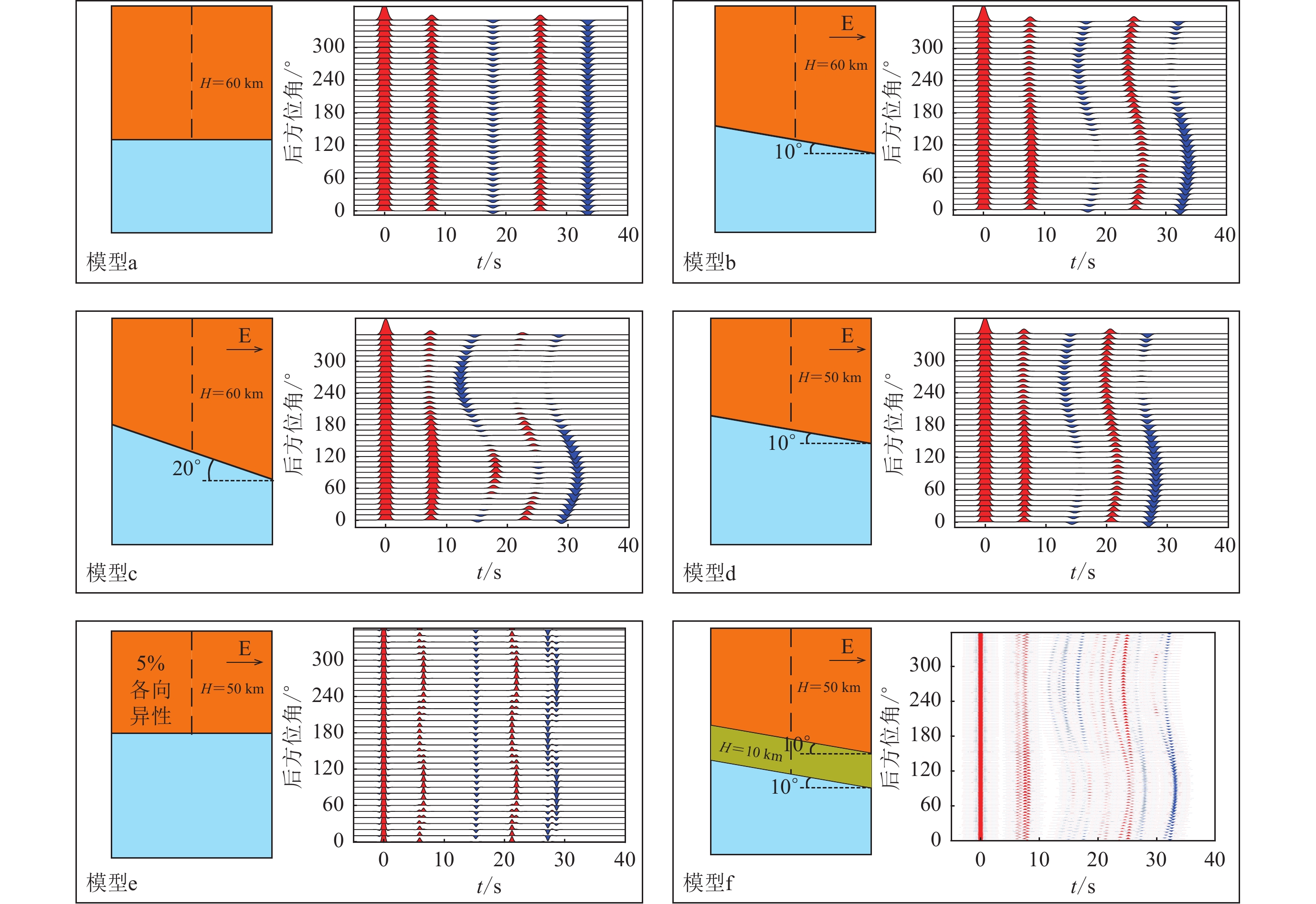
 下载:
下载:
